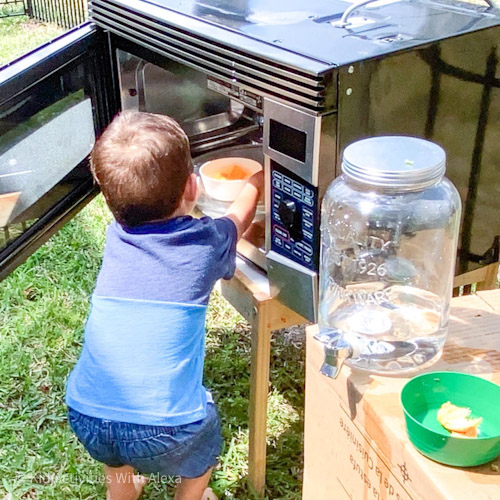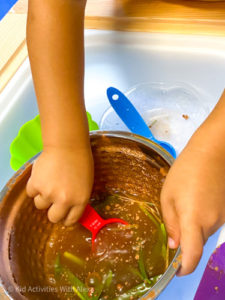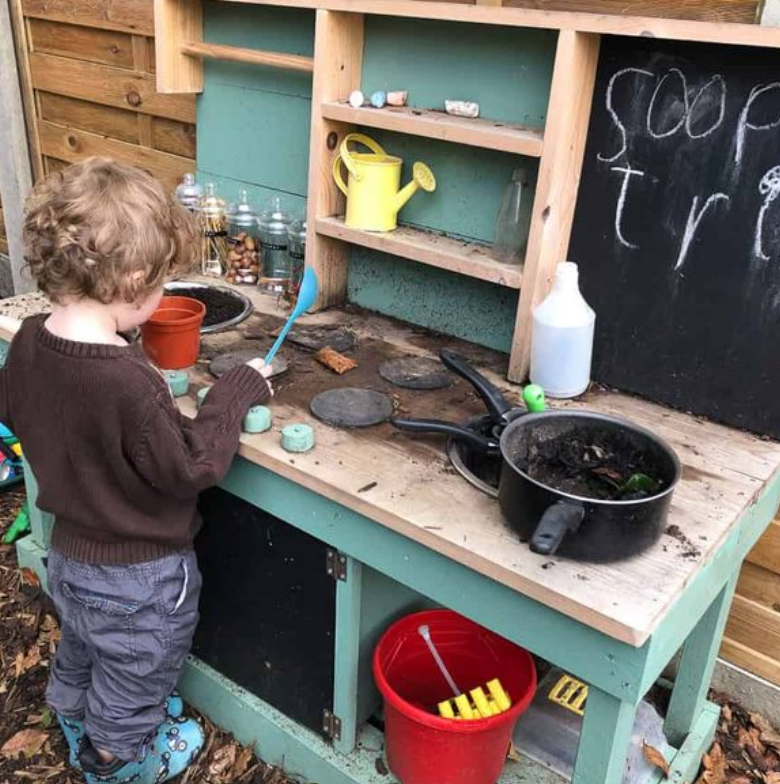A mud kitchen combines real-life utensils with a small, interactive, and fun outdoor kitchen environment to help improve and develop the sensory experience in children and toddlers.
You can create your own mud kitchen for a relatively inexpensive cost, or alternatively purchase one without costing an arm and a leg.
Mud kitchens promote sensory and behavioral play.
Teaching young children and toddlers various behavioral attitudes and general manners such as:
- playing with textures
- sharing
- communicating
- working together
- work independently or as a team to create a project, in this case, some muddy delights and pastries.
This article will discuss what mud kitchens are, who they’re for, and how to make your own.
So, without further ado, grab your kitchen utensils, beginning digging some mud, and let’s get to it.
What are the benefits of using a mud kitchen?
Mud kitchens are not a new thing – they’ve been around for many years, although mentioned less today due to the increasing use of smartphones and other technology.
Cut back to the basics, ditch the iPad, turn off angry birds, and venture into the garden and create your very own mud kitchen with your children – promoting healthy toddler development and behavior.
Further benefits of using a mud kitchen with your toddle include:
- Promotes role play with young children
- Helps develop social skills and emotional understanding e.g. taking on the role of “head chef”
- Language development
- Physical development
- It’s expressive
- Provides greater understanding of the world
- It’s fun!
As you can see, the benefits are far and in-between, in other words, there are many. These mud kitchens can be used as part of your toddler’s activity or learning plan, providing a fun, unique, and interactive experience that supports all-round development.
However, mud kitchens are particularly beneficial and supportive to your toddler’s learning when used with other young children. This helps foster positive behaviors early on in a safe environment.
Unlike a real kitchen where a pan may catch on fire, the worst that will happen in your back garden is a mild disagreement – one easily solved with a slice of mud pie.
What age are mud kitchens for?
Mud kitchens are targeted towards toddlers and young children, anyone from the age of one to seven years old.
As we already know, young children develop behaviors, manners, and other behavioral tendencies early on in life.
These are fostered, with further positive behaviors enforced with active play, including the use of a mud kitchen.
What do you need to make a mud kitchen?
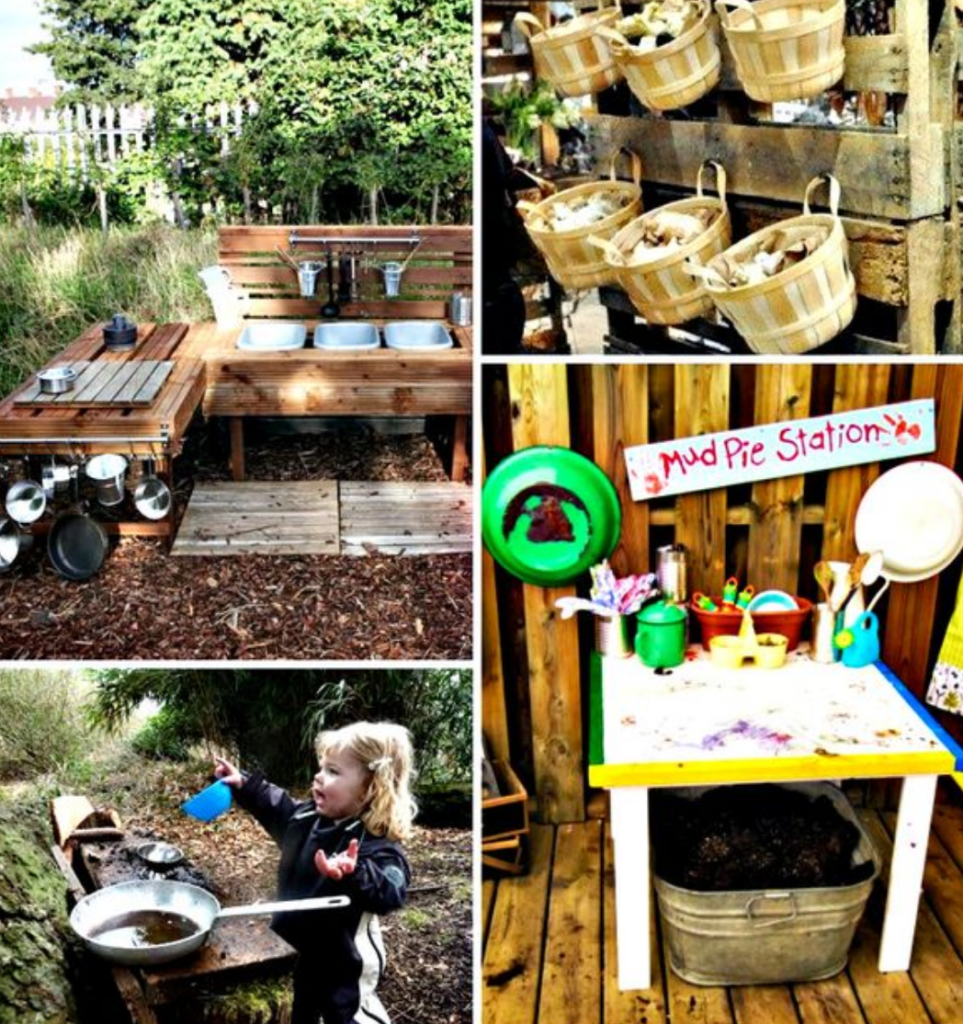
So, are you ready to create your very own mud kitchen? Great, just remember: as tasty as it looks, you can’t actually eat the food… even if it’s a mud cheesecake.
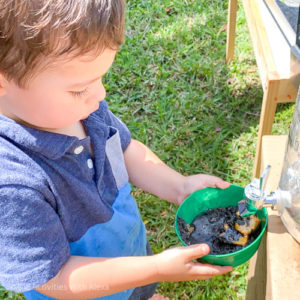
If setting up a mud kitchen on your own, this does not have to be an expensive project. In fact, it could cost you little to nothing.
To make a mud kitchen you will need:
- A supply of mud, dirt, or sand (allows for different textures)
- A readily accessible water supply (changes the consistency of the mud and for washing up)
- Child-friendly work surfaces e.g. old units, bookcases, or even a few planks of wood ( my kitchen was temporarily set up first and I used a really large cardboard box )
- If possible, although not necessary adding shelves to add to the ‘kitchen feel’
- optional: Old non-working microwave
The materials to create your own mud kitchen are easily sourced, for most they have these lying around the house.
However, if not, items such as small work surfaces can be picked up second hand for cheap, and sometimes even free.
Where should I locate the mud kitchen?
If possible we advise creating the mud kitchen in a corner – this adds to the kitchen feel, further supported by the use of shelves.
These shelves can also double up as storage, allowing you to store Tupperware full of mud, sand, utensils, and your child’s creations.
How tall should a mud kitchen be?
Your mud kitchen needs to be child friendly, so we recommend no taller than 50-60 cm. The width of your kitchen depends on the room you have available, however, we recommend somewhere in the 120 cm range, if possible.
Mud kitchen toy ideas
What’s a mud kitchen without a few toys? Adding toys to the mix further encourages roleplay, keeps it fun, and supports development.
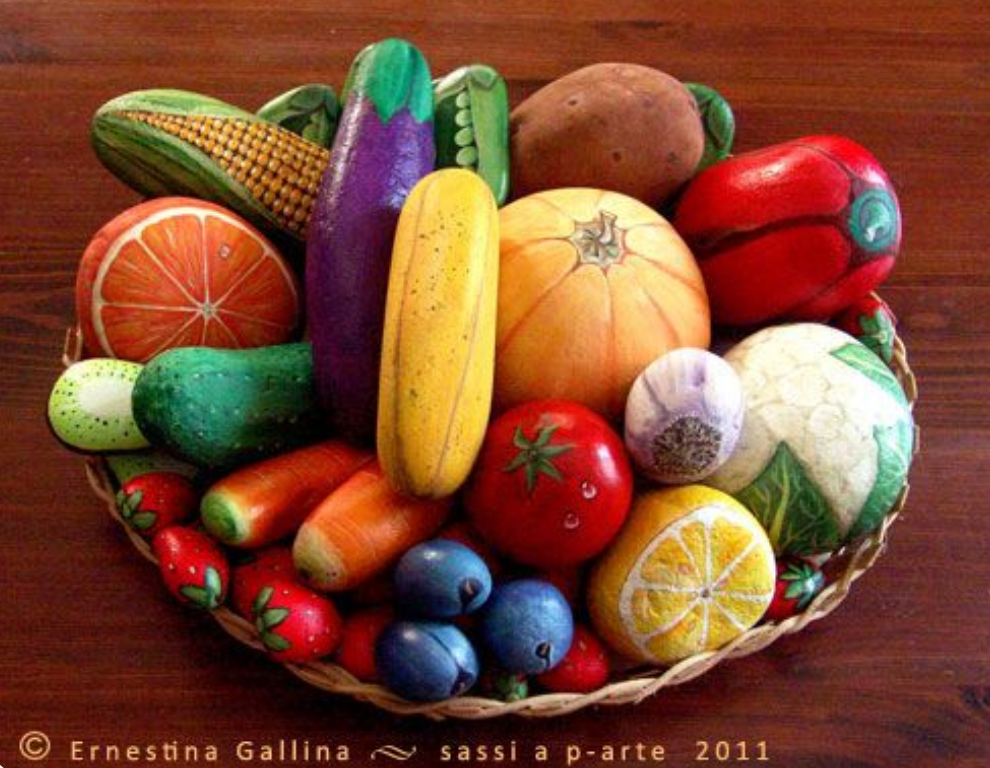
keep items that would belong in a kitchen into a mud kitchen. Leave the non-relevant toys for sensory bin ideas or activities.
Toys you may wish to include for your mud kitchen may be as follows:
- Fake vegetables
- Orange peels
- A chalkboard to write down recipes, further encouraging imagination and learning
- water source (pitch of water or a hose )
- Cups, bowls, and plates
- Pots and utensils
Generally, you want to opt for real utensils, but avoid sharp ones such as knives, peelers, or graters – stick to the classics; wooden spoons, silicone molds, cupcake molds, serving spoons, and old pots and pans.
Using these utensils is important as it fosters and encourages learning. Conversely, iff we throw action figures into the mix this can interrupt this process, distracting your child and loose the whole purpose of creating a mud kitchen.
So, keep it basic and minimal, the fewer toys the better.
How do you make homemade mud?
If you’re going to create your own mud kitchen, you’re going to want to know how to create your own mud – that is if you don’t want your back garden dug up.
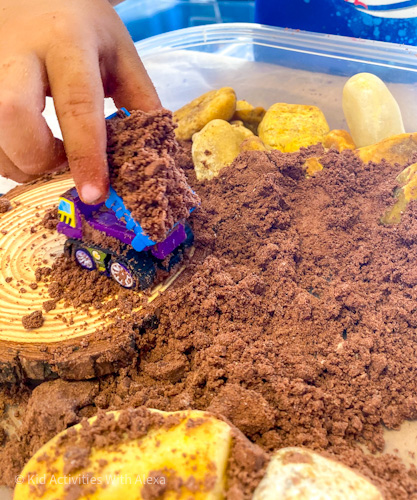
Notes
The oil makes the mud be moldable, like wet sand. If you don’t care for it to be moldable you can leave it out.
If you want more of a mud texture, replace the oil with water
Ingredients
- 2 cups Flour
- 1/2 Cocoa powder
- 1/3 vegetable oil
- Water
Instructions
- • Place the cocoa powder in a bowl.
- • Add the flour.
- • Add the oil little by little and mix till desired textures.
- • Spread the Edible mud on a tray or table for the kids to play with.
- • You can add some farm animals, mini construction vehicles, other small toys for the kids to play with on the mud.
Last thoughts on creating a mud kitchen
Creating a mud kitchen can be a great developmental area for play and imagination for toddlers and kids. You can go all out and create a custom made one or you can keep it simple.
Think a mini play kitchen but with real pots, pans, water, utensils, plants, and mud.
If you don’t want to recreate a full kitchen or don’t have the setup, you can set up a sensory activity to cook and provide all the elements of a mud kitchen. If you see your child absolutely loved the idea, then start looking out for used furniture or check out your neighbor on bulk pick up day and create your own mini version of a mud kitchen. Most importantly, let your child get messy and have fun!
